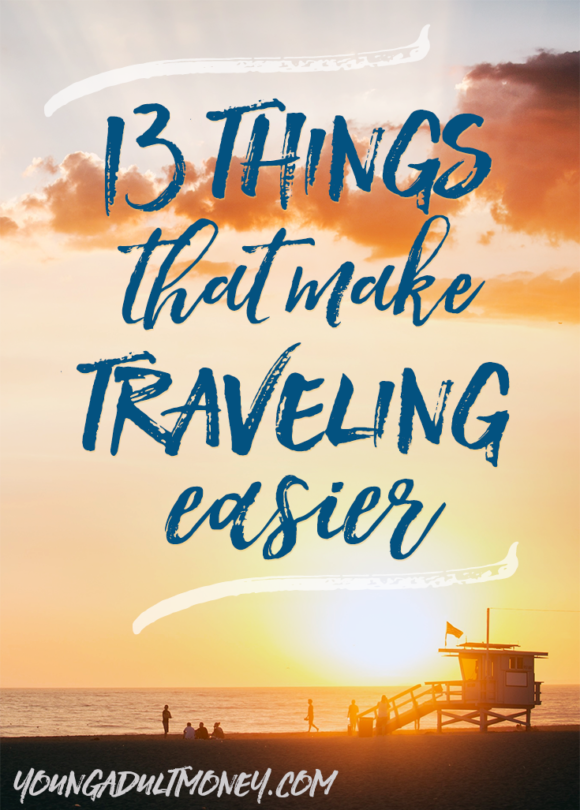 Please welcome our newest writer, Mike Kineman.
Please welcome our newest writer, Mike Kineman.
Mike grew up in Great Britain and studied Political Science at Indiana Wesleyan University. He recently spent two years teaching English to children in South Korea. In his free time he enjoys hiking, writing, photography, and strong black coffee as often as possible. He is currently living in England where he plans to do an MA in Creative Non-fiction in the fall.
Every year I travel, I inevitably end up doing two things. Firstly, I always end up packing my bag to maximum capacity. Always. The second problem probably creates the first: I’m always scouring the internet for new items to make traveling that little bit easier.
The last couple years I’ve gotten into the whole backpacking thing more so than ever before. One of my favorite parts is that I’m always meeting new people and getting to see how they do the whole traveling thing from the inside.
This last year for instance, I traveled with two of my good friends. One is a successful accountant in his mid-twenties in corporate America. The other is late twenties, an adventure junkie, and an English teacher in South Korea. It’s safe to say that these two had very different approaches to traveling but both of them brought things I ended up purchasing for myself.
This list is a compilation of some of the most recent items I’ve bought as well as some classic essentials that I’ve had from the beginning. Some are more specific to backpackers and others are for general vacation travel.
Either way though, whether you’re into adventure and adrenaline or whether you’re into organization and convenience, there’s something here for you from all corners of the traveling world. These are the things that I never walk out of my door without.
1) Ear Plugs and Carrying Case ($7.45)
If your travel plans include a hostel of any kind, even if you’re going to splash out on a private room, then ear plugs are a great idea.
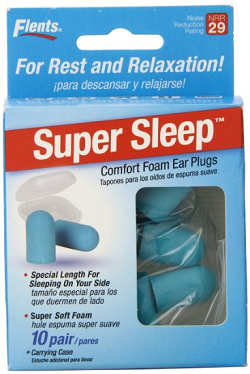 I’ve stayed in all kinds of hostels and the only rule I know is that you just never know what you’re going to get. Even if a hostel doesn’t have a reputation for being a party hostel or the reviews online suggest it’s calm and relaxed, that doesn’t always guarantee anything. When staying in a dorm, getting someone who’s a wild card is a real possibility.
I’ve stayed in all kinds of hostels and the only rule I know is that you just never know what you’re going to get. Even if a hostel doesn’t have a reputation for being a party hostel or the reviews online suggest it’s calm and relaxed, that doesn’t always guarantee anything. When staying in a dorm, getting someone who’s a wild card is a real possibility.
If you get there and end up with someone who snores or who comes in drunk, or someone who insists on talking on the phone even when they know people are trying to sleep, then it can really make your attempts to get a good night’s sleep very frustrating.
Even if you are planning to stay in hotels or five star resorts, earplugs might not be a bad idea if you hope to get some sleep on the plane, or if you have any long bus journeys to get to the attractions you want to see. They take up basically no space, are light weight, cheap, and can make the difference between a night where you sleep and a night where you don’t.
2) Lonely Planet Guide (around $15-20)
I’ve heard a lot of arguments against the Lonely Planet Guide: it’s heavy, takes up space, you’ve already made plans, booked everything you need to, and besides if something goes wrong there’s always Google anyway. I still say you buy and take a Lonely Planet Guide. Whether I buy this year’s copy or borrow one that’s a couple years old from a friend, one of these guides is always on my list.
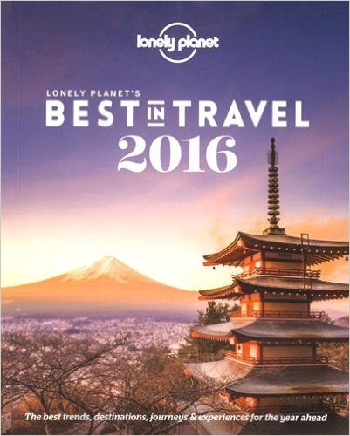 The first good thing about them is that they’re usually accurate about the things that matter. I’m not talking about facts, because a guide book with correct facts should be a given. What I mean is in its recommendations: is the food at the restaurant good? Is a particular activity or hike worth your time? Is a town or beach worth visiting at all? It’s like having a constant opinion of someone you trust rather than scouring the internet for sources that take time before you know whether your tastes align. What the writers of Lonely Planet recommend, I usually agree with.
The first good thing about them is that they’re usually accurate about the things that matter. I’m not talking about facts, because a guide book with correct facts should be a given. What I mean is in its recommendations: is the food at the restaurant good? Is a particular activity or hike worth your time? Is a town or beach worth visiting at all? It’s like having a constant opinion of someone you trust rather than scouring the internet for sources that take time before you know whether your tastes align. What the writers of Lonely Planet recommend, I usually agree with.
It’s true that a lot of that information is often available online, but then again sometimes it’s not. When I lived in South Korea and wanted to visit a popular tourist attraction, sometimes there was information posted online in English and sometimes there wasn’t. When there wasn’t, I turned to expat blogs, and sometimes I found the information I needed and then sometimes I didn’t.
Even in developed countries, there isn’t always information available in English as readily as you might like. But if you’ve bought the Lonely Planet Guide, chances are that most things you want to see or do in a country, they’ve already reviewed, and done so in plain English. When I lived in Korea my friends would ask me how I found out about a lot of the cool stuff I did. Answer? I bought the Lonely Planet Guide with my first pay check, and I used it until the week I left.
The final advantage I’ll mention is that you may not always have the internet access you would like. You may find yourself in remote areas with no cell phone connection (even if you’ve bought a local SIM), and with no knowledge of the language. You may plan your day at the beach and have a typhoon show up, or plan to go hiking and have the clouds roll in. The nature of traveling is that you can’t predict or control everything. The best way I know to always have a plan B, without spending hours coming up with plans you may never use, is to have a Lonely Planet Guide. It will give you options in any location where there is some sort of big or small attraction so that when plans change it’s not wasted time and money.
3) Portable Charger ($21)
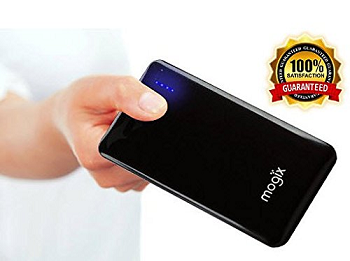 A portable charger is a modern day essential. While I can’t exactly argue in favor of more time on your phone while you’re traveling, I have to admit these are very handy.
A portable charger is a modern day essential. While I can’t exactly argue in favor of more time on your phone while you’re traveling, I have to admit these are very handy.
If you get one with two USB ports you can also charge two phones/tablets at night while you sleep and it will charge both your portable charger and two devices at the same time. It can also be pretty useful when driving all day and not correctly budgeting your battery for traffic or getting lost, so that little extra charge is nice to be able to get you where you need to go.
4) Waterproof Sacks ($16)
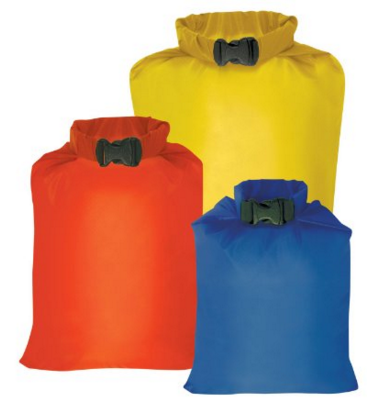 I always take a couple of these waterproof sacks with me hiking or when I head out into a city with a day pack. My pack is water resistant, but if I get caught in a downpour then my phone and camera could be ruined depending on how far from shelter I am.
I always take a couple of these waterproof sacks with me hiking or when I head out into a city with a day pack. My pack is water resistant, but if I get caught in a downpour then my phone and camera could be ruined depending on how far from shelter I am.
These little bags mean that even if my clothes get soaked through and my books get ruined, at least I have peace of mind that my camera and phone are safe.
It’s good for camping too when temperatures are going to drop really low at night and you don’t want get any moisture on the inside of your electronics. They roll up tight and fit into any little side pocket or your main or day pack without much issue. They’re cheap and lightweight, and protect the things that matter.
5) Swiss Army Knife ($13-20)
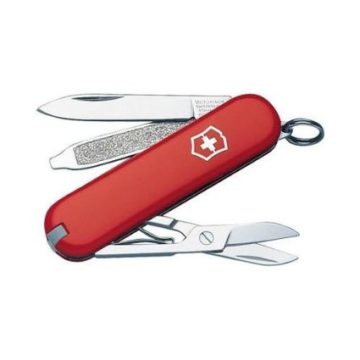 I know it’s a cliché answer to this question, but a Swiss army knife is one of the most useful items I take with me. The knife I use is very basic. It has a blade, a bottle opener, and a can opener, which is genuinely almost everything you could need to face your unexpected eating and drinking needs while traveling.
I know it’s a cliché answer to this question, but a Swiss army knife is one of the most useful items I take with me. The knife I use is very basic. It has a blade, a bottle opener, and a can opener, which is genuinely almost everything you could need to face your unexpected eating and drinking needs while traveling.
While I’ve never been in a real survival situation where I needed it, it’s still a great thing to have on any camping or trekking trip just in case. I’ve used it to repair tents, bandage cuts, and make light repairs to car engines to name some.
Sure, it might just be that I like using it, but it also really is a highly useful tool to have along. Just remember to check it in along with your bag at the airport or TSA will have another knife to add to their extensive collection.
6) Sleeping Bag Liner ($15)
I can’t take credit for this one. Sleeping bag liners were introduced to me by my friend in the Philippines, but it’s a fantastic item to bring along. It’s actual purpose is for use inside a sleeping bag if you’re out camping in really cold conditions.
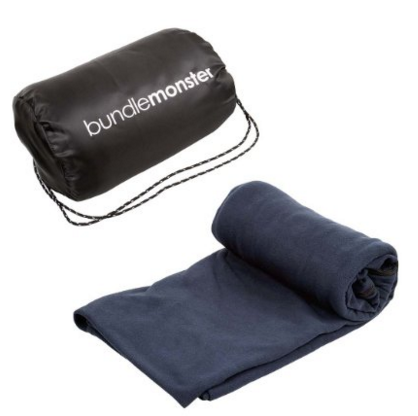 I don’t take a sleeping bag with me when I travel because I try to avoid camping in developing nations unless I know for a fact it’s safe, but the sleeping bag liner is still valuable.
I don’t take a sleeping bag with me when I travel because I try to avoid camping in developing nations unless I know for a fact it’s safe, but the sleeping bag liner is still valuable.
If you’re in a place where it gets cold at night then it’s nice to put under your duvet, as hostels can get cold at night when they try to save on heating. Conversely though, it also works well in hot countries because you probably won’t be prepared if it does get cold or when the hostel cranks up their air-con, or when a rogue bus driver decides he wants his bus temperature to sit just above freezing.
It’s surprising how the little cocoon it creates for you can be the line between uncomfortably cold and bearable. It’s basically a very thin, light-weight little blanket that packs up to the size of your fist. If you’re someone who feels the cold, then this is a great idea.
7) Head Lamp ($14-26)
If you’re going to a developing country, or to remote areas of a developed one, having need of a head lamp is a pretty safe bet.
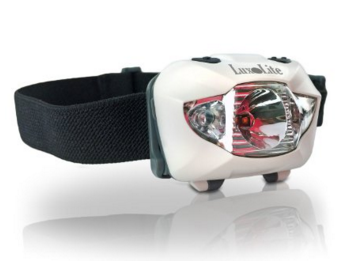 In developing countries the plus sides are obvious — in the country, street lighting may be sparse and while trekking you’ll have no light unless you bring your own along. In cities, power cuts can still happen and you are without power for hours.
In developing countries the plus sides are obvious — in the country, street lighting may be sparse and while trekking you’ll have no light unless you bring your own along. In cities, power cuts can still happen and you are without power for hours.
Beyond those reasons though, many of the most beautiful and iconic attractions in the world require you to get up while it’s still dark — in New Zealand climbing a peak before dawn means being rewarded with a sunrise of some of the most beautiful views in the world.
In Peru, to get the full experience of Machu Picchu you have to rise before dawn and hike to the top of the mountain too. You’ll want a head lamp for that.
8) MAPS.ME App (Free)
Google Maps is great — that is until you don’t have cell service or wifi. This app solves that problem for you by letting you download maps for a particular region of your choosing and then manages to track your approximate location, even if you don’t have any service, as long as your device has a built-in GPS receiver.

It’s free. It’s got a five star review in the app store, and it’s amazing for scooter rides or car journeys where you don’t know where you’re going or how to get back.
I feel like this item deserves a longer write-up because of how good it is, but without many downsides I don’t really have much else to say other than just go ahead and download it!
9) Lightning to USB Camera Adapter ($31)
 The nature of social media is that people want to know what you’re doing right now. You went somewhere awesome six months ago and you’re just now posting a #TBT sitting in your office? That’s great but people are interested in what’s happening now. A lot of people take photos with their phone these days, but many still use cameras too. I’m one of those. A phone is fine, but it just doesn’t do a landscape justice sometimes.
The nature of social media is that people want to know what you’re doing right now. You went somewhere awesome six months ago and you’re just now posting a #TBT sitting in your office? That’s great but people are interested in what’s happening now. A lot of people take photos with their phone these days, but many still use cameras too. I’m one of those. A phone is fine, but it just doesn’t do a landscape justice sometimes.
However, the big advantage your phone has over the camera is the ease with which you can upload and post photos from it (unless you have a newer camera with wifi built in). Often the photos shot on the camera have to be downloaded to a Mac or PC before you can post them and by then you’re already home. This little cable lets you plug your camera into your iPad and download your photos straight onto it, ready to edit and post whenever.
I really like this item, firstly because I love photos, but secondly because it stops me from taking a photo on my phone just because I know I’ll want to post it now rather than later. It keeps me shooting with my camera and ultimately gives me much better photos at the end of a trip, as I know I can download them and look at them as soon as I’m back to my hotel or hostel. I would seriously recommend this to any (impatient) photographers out there.
10) Insulated Water Bottle ($34)
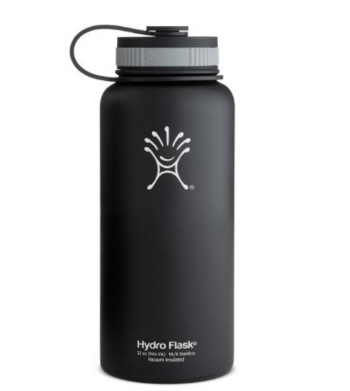 This insulated water bottle is heavier than a Nalgene and more expensive, yes, but it’s definitely been worth it for me, especially if I’m traveling somewhere hot.
This insulated water bottle is heavier than a Nalgene and more expensive, yes, but it’s definitely been worth it for me, especially if I’m traveling somewhere hot.
Just fill it up in the morning and marvel how, in the heat of the afternoon, your water is still cool. Seriously though, it really will still be cold.
This thing works wonders that probably has to be experienced to be believed.
I was introduced to it this year while traveling with a friend in New Zealand, and since then my trusty Nalgene, that’s been everywhere with me, has sadly been retired in favor of one of these. Cold water on a hot day beats a bottle with sentimental value any day, in my book.
11) Waterproof iPhone Case ($47)
If you’re going somewhere tropical and plan on diving or snorkeling — or even just going in the ocean at all — then you’ll probably want to pick up a waterproof iPhone case.
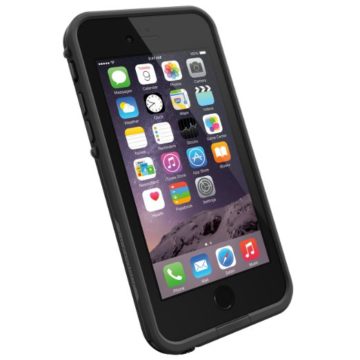 Photos in the water adds an extra dimension to your travel photos that really takes them up a notch. You can surf with it, swim, snorkel, whatever basically. It’s not the same as buying a GoPro or professional grade underwater gear, true, but it’s far cheaper and perfect for the amateur who just wants to use it a couple times on vacation.
Photos in the water adds an extra dimension to your travel photos that really takes them up a notch. You can surf with it, swim, snorkel, whatever basically. It’s not the same as buying a GoPro or professional grade underwater gear, true, but it’s far cheaper and perfect for the amateur who just wants to use it a couple times on vacation.
One word of caution is to do the proper research. I bought one of the cheaper cases: more of a waterproof bag for my phone than an actual case. Bad idea, because the photos underwater all came out cloudy, like there’s a film over the lens. Though they’re cheap, these type of cases are more for simply making sure your phone stays safe underwater, not for shooting underwater photos.
12) Cord Organizer / Cord Taco ($10-20)
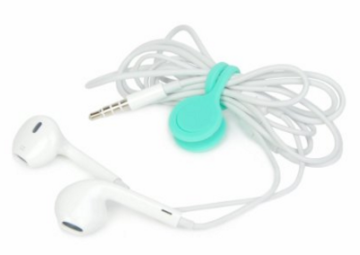 Staying organized and keeping track of your stuff is difficult when you’re traveling. Keeping your cords untangled may be a simple thing, but it does make me feel better to have things organized.
Staying organized and keeping track of your stuff is difficult when you’re traveling. Keeping your cords untangled may be a simple thing, but it does make me feel better to have things organized.
We may only be talking about a matter of seconds or possibly minutes, but it’s great when you can reach straight into your bag, grab your headphones without a wad of cables coming out with it.
A cord organizer may not be the most essential item on the list, but a nice touch all the same and these little leather clips from This Is Ground are particularly stylish, I think. A great pick up for those of you out there with the need to be highly organized.
13) Combination padlock ($12)
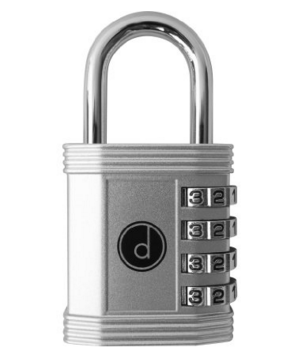 A padlock is another one of those things that might not hurt if you’re staying in hotels or private rooms the whole way, but is really more of a recommendation for the traveler staying in dorm rooms. That’s because leaving your bags out in the open means that anyone in your room or anyone that walks into the hostel off the street can have access to your bags.
A padlock is another one of those things that might not hurt if you’re staying in hotels or private rooms the whole way, but is really more of a recommendation for the traveler staying in dorm rooms. That’s because leaving your bags out in the open means that anyone in your room or anyone that walks into the hostel off the street can have access to your bags.
Most hostels have lockers for you to put your bags in, but they expect you to have your own padlock. If not, they’ll happily sell you a truly cheap pad lock for an outrageous price. If you’re staying in hostels, then go out and get a combination padlock and save yourself some money while getting a quality lock at the same time.
_____________________________________________________________
I’ve found that everything on this list makes travelling easier. Some things are more intuitive than others – how many of you have honestly thought to pack waterproof sacks – but they all make the experience a little more enjoyable and help solve potential problems that come up when travelling.
How many of these things do you bring with you when you travel? What would you add to the list?


A battery pack and insulated water bottle are essential for me. The only camera I carry is my cellphone so I don’t want the battery to die when I need it!
I have a friend who travels pretty constantly. He keeps a swiss army knife at every single one of his company’s offices. The boy scout in him can’t stand the thought of being without a knife if he needs one.
I’m not quite on your friend’s level yet, but that’s pretty funny!
The only thing I bring from your list is a lock for my suitcase. No matter where I go, I lock my computer and expensive stuff up.
It seems like such a basic concept, doesn’t it? Yet, it always surprises me how many people just don’t bother locking up their stuff.
I always bring lots of zip lock baggies of all sizes. They really come in handy!
Head lamp, YES! You might feel goofy wearing, but it will definitely come in handy. I can almost guarantee there will be a situation where it will be a must have.
I completely agree. I only ended up buying one after years of constantly finding myself in situations where I wished that I had one.
This is a great list. I need to grab some ear plugs.
Thanks, glad you found it useful! The ear plugs are definitely handy.
I wo
I travel pretty much constantly for work, and I’d say: ditch the knife. That forces you to check your bag, and carrying everything on is better for a ton of reasons. I’m also a fan of a free or cheap binder clip instead of the cord taco. :-)
I agree. If you’re traveling light enough to carry your bag on the plane, then do it!
You really should! The padlock is actually the one I always forget. I must have about three or four cheap padlocks from various hostels that were a complete waste of money.
I usually download a lonely planet (or other types) guide on to my phone before the trip. This allows me to access the guide without internet connection and also saves me valuable space in my travel bag.
I always take emergency glow sticks and flashlights when traveling through developing countries. But I can see why headlamps would make things even more easier.I also stuff my cords in an empty talenti ice cream tub – they’re lightweight and easy to stuff things into. But thanks for all these suggestions! I should really get a sleeping bag liner
I always like to carry a portable power bank for my cell! during travel. I think it’s very essential for me during long trip. So you may be add such type of thing to your list if you have to do much more travel for work.